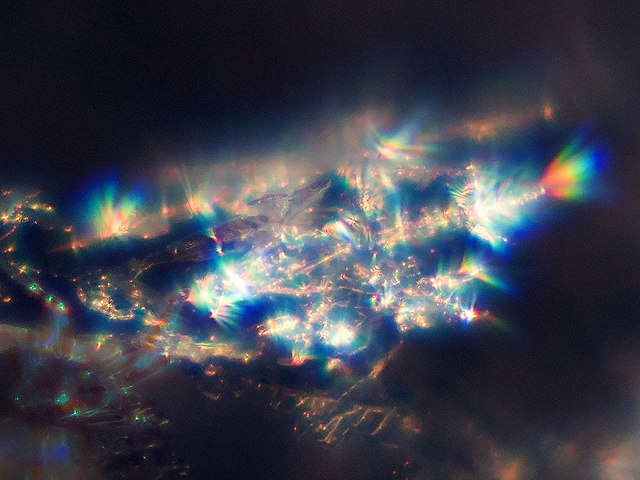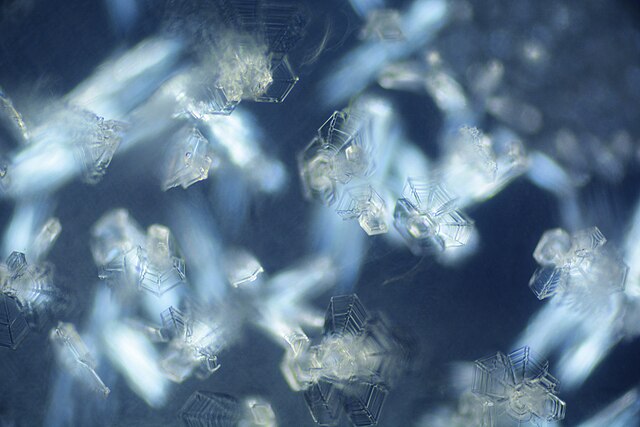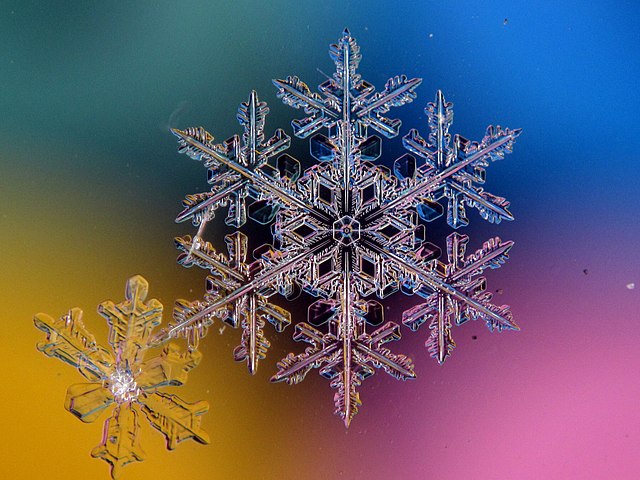A snowflake is a single ice crystal that has achieved a sufficient size, and may have amalgamated with others, which falls through the Earth's atmosphere as snow. Each flake nucleates around a tiny particle in supersaturated air masses by attracting supercooled cloud water droplets, which freeze and accrete in crystal form. Complex shapes emerge as the flake moves through differing temperature and humidity zones in the atmosphere, such that individual snowflakes differ in detail from one another, but may be categorized in eight broad classifications and at least 80 individual variants. The main constituent shapes for ice crystals, from which combinations may occur, are needle, column, plate, and rime. Snow appears white in color despite being made of clear ice. This is due to diffuse reflection of the whole spectrum of light by the small crystal facets of the snowflakes.
Macro photography of a natural snowflake
Freshly fallen snowflakes
Scanning electron microscope image of rime frost on both ends of a "capped column" snowflake.
Snow crystals in strong direct sunlight act like small prisms
Ice crystals are solid ice in symmetrical shapes including hexagonal columns, hexagonal plates, and dendritic crystals. Ice crystals are responsible for various atmospheric optic displays and cloud formations.
A close-up of growing ice crystals displaying typical hexagonal symmetry.
Further freezing of water on an ice crystal produces snowflakes.
A halo created by light reflecting off of ice crystals in cirrus clouds. This specific halo is called a 46° halo.
Dendritic ice crystals imaged with a scanning electron microscope. The colors are computer generated.








